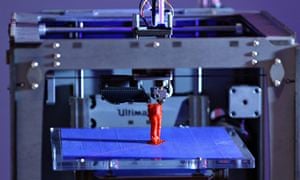As with the content industries before it, 3D rights owners face a dilemma. Do you resist it and hope 3D printing is a passing fad or do you embrace it? Make the wrong choice and it may well print your lunch.
by Mark Owen - The Guardian
Consumer brands attempting to keep up with the changing consumer landscape are looking at how new technologies can give them a competitive market edge. For example, it was recently reported that Lego might consider 3D printing in the future with a vision of people printing products at home. The concept of 3D printing remains a hot topic and poses interesting opportunities for brands and retailers, but there are significant legal considerations that need to be explored.
One of the questions that must be addressed relates to rights owners and the risk of digital piracy. Mainstream use of this new technology could inevitably make it easier for home users and backstreet 3D print shops to duplicate products on the cheap.
There are comparisons to be drawn with the content industries, especially music, and how it coped when faced with such a disruptive technology. When theoriginal Napster launched in the late 1990s, it seemed barely feasible that digital copying would become a serious threat to the established record industry.
The technology to make and distribute digital copies was around but few consumers had it. There was little pressure on the industry to change. But in no time the music industry was turned on its head, fighting a constantly renewing and growing hydra of filesharing sites, while being criticised on all sides for not adapting its business model to the new environment.
That fight isn't over, but it has calmed down because substantial progress has been made both in defining and restricting illegal activities andoffering legal alternatives. But it required a significant adaptation in both mindset and business models. Will Lego learn the lessons of the content industries? Though burdened with increasingly rapid cycles of change and adoption of technology, it has a number of advantages. READ MORE
(Photo Credit: Oli Scarff/Getty Images)
